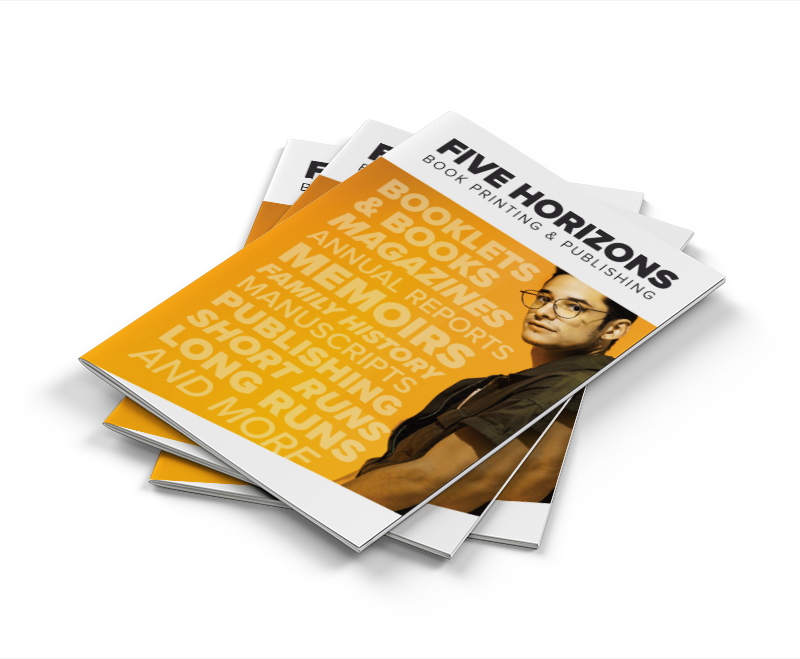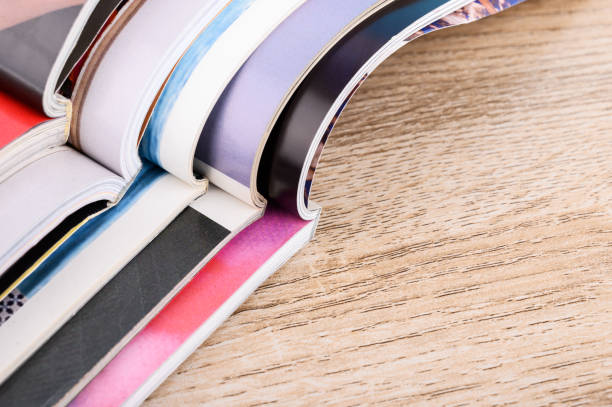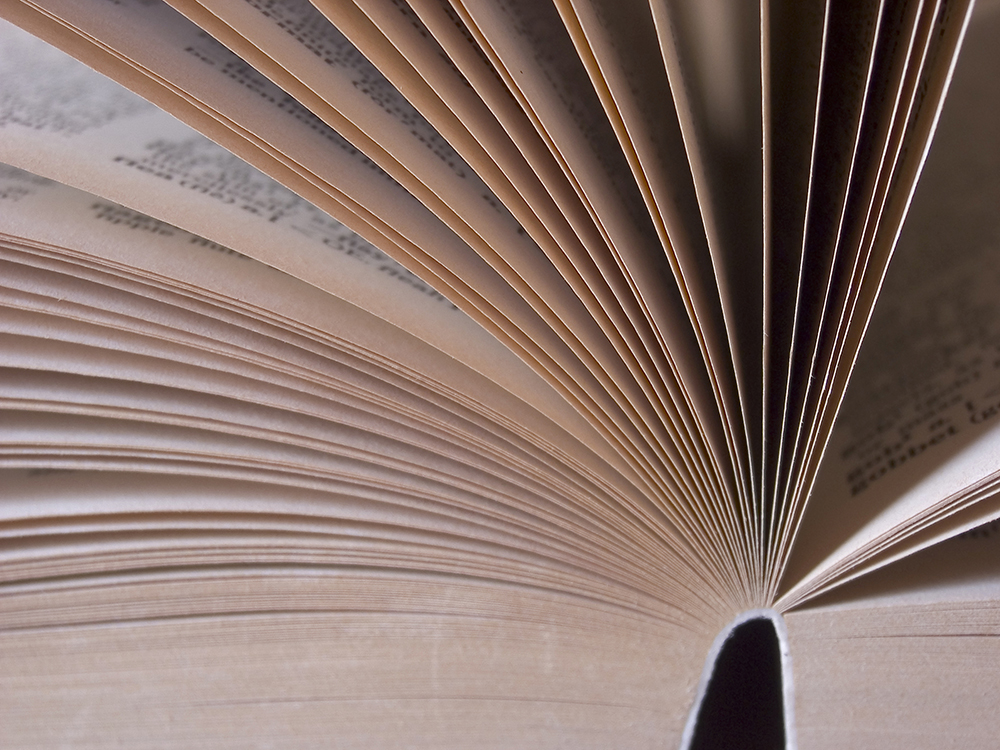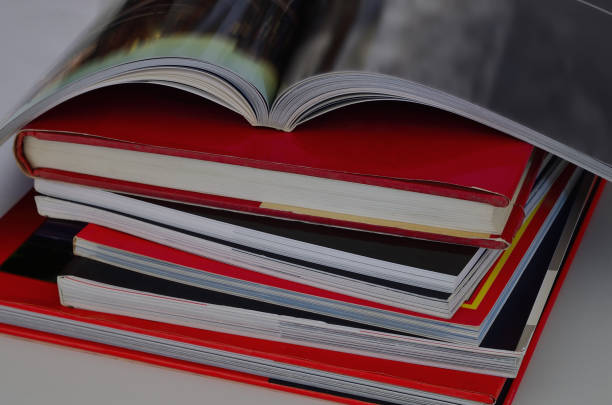






In the world of academic publishing, the presentation and durability of scholarly works are of utmost importance. This is where perfect binding book printing plays a crucial role. Perfect binding offers a professional and aesthetically pleasing method of binding academic books, making them suitable for dissertations, theses, research papers, and more.
Perfect binding involves using thermal glue to bind the pages together and then adhering the book’s cover to the spine. The result is a durable and sturdy book that can withstand frequent use and the test of time. Compared to other binding methods such as saddle stitching or spiral binding, perfect binding offers a professional appearance that impresses both authors and readers.
Academics and researchers often choose perfect binding for its many advantages. Not only does it give their works a polished and professional presentation, but it is also cost-effective, making it an ideal choice for academic publishing. Additionally, perfect bound books have a longer lifespan, ensuring that valuable research remains intact for years to come.
In this article, we will delve deeper into the role of perfect binding book printing in academic publishing. We will discuss the technical aspects of perfect binding, compare it to other binding methods, explore the influence of cover design, and highlight the customization options available. We will also provide guidance on page count, thickness, and preparing manuscripts for perfect binding.
In this section, we will provide an in-depth understanding of perfect binding book printing. We will explore the definition and process of perfect binding, as well as the aesthetics and materials used in creating perfect bound books.
Perfect binding is a popular bookbinding method that involves gluing the pages together at the spine. This process creates a clean, professional look and allows the book to open flat without the need for sewing or stitching.
Perfect bound books offer a sleek, polished appearance that is ideal for academic publications. With a smooth spine and clean edges, these books have a professional and sophisticated look that makes them stand out on bookshelves. The square spine also provides ample space for titles and author names, enhancing the overall aesthetic appeal.
Various materials are used in perfect binding to ensure the durability and quality of the finished product. The inner pages are typically printed on high-quality paper, ensuring clarity and legibility. For the cover, cardstock or heavy paper is commonly used, providing a sturdy and attractive exterior. Adhesive glue is then applied to bind the pages and cover together securely. The choice of materials plays a crucial role in the overall look and feel of the perfect bound book.
| Materials | Attributes |
|---|---|
| High-quality paper | Ensures clarity and legibility of inner pages |
| Cardstock or heavy paper | Provides a sturdy and attractive cover |
| Adhesive glue | Binds pages and cover securely |

In the world of academic publishing, the choice of binding method plays a crucial role in ensuring the professional presentation of scholarly works. Perfect binding, with its numerous advantages, has become a preferred option for academics and researchers. This section explores the key advantages that perfect binding offers in scholarly works.
Perfect binding is known for its ability to provide a clean and polished appearance to academic materials. The finished product features a flat spine that allows for a professional-looking book that is perfect for dissertations, theses, and research papers. With its sleek and seamless design, perfect binding ensures that the content of the book takes center stage, making it visually appealing and captivating to readers.
Another advantage of perfect binding in scholarly works is its cost efficiency. Compared to other binding methods, such as hardcover binding, perfect binding offers a more affordable option without compromising on quality. Academics and researchers can produce high-quality bound materials at a fraction of the cost, making perfect binding a budget-friendly choice for academic publishing.
When it comes to academic works, durability and longevity are of utmost importance. Perfect binding ensures that the bound materials can withstand the test of time. The adhesive used in perfect binding creates a strong bond between the pages and the cover, ensuring that the book remains intact even with frequent use. This longevity and durability make perfect binding ideal for academic works that are expected to be referenced and preserved for years to come.
In this section, we will compare the popular perfect bound book binding method with other commonly used binding methods such as saddle stitching and spiral binding. We will explore the key differences in terms of aesthetics, durability, and cost, to help you understand why perfect binding is often the preferred choice for many academic publishers.
Saddle stitching is a binding method that involves folding the pages of a book or document in half and stapling them along the fold. This method is commonly used for thin booklets or magazines. While saddle stitching offers simplicity and cost-effectiveness, it is not as durable as perfect binding and may not be suitable for large publications or scholarly works.
On the other hand, spiral binding uses a plastic or metal coil to secure the pages of a book. This method allows pages to lay flat when opened and offers the flexibility of adding or removing pages. However, spiral binding can be less visually appealing and may be prone to pages becoming loose or falling out over time if bound incorrectly
Perfect binding, unlike saddle stitching and spiral binding, offers a more professional and polished look for academic books. The gluing process used in perfect binding creates a strong and durable bond, ensuring that the pages remain intact even with frequent use. This makes it a suitable choice for publications that require longevity, such as dissertations, theses, and research papers.
In addition to its visual appeal and durability, perfect binding also provides versatility in terms of book size and thickness. Perfect bound books can accommodate a wide range of page counts, making it suitable for both smaller and larger volumes of academic content. This flexibility allows for easy customization to meet the specific requirements of academic publishers.
The advantages of perfect binding over other binding methods include:
| Saddle Stitching | Spiral Binding | Perfect Binding | |
|---|---|---|---|
| Aesthetics | Simple and unassuming | Less visually appealing | Professional and polished |
| Durability | Less durable, especially for larger publications | Pages may become loose over time | Strong and durable bond |
| Customization | Limited options | Flexible to add or remove pages | Can accommodate a wide range of page counts |
| Cost | Cost-effective for small booklets | Reasonable prices | Cost-effective for larger volumes |
In the process of perfect binding book printing, several technical aspects play a crucial role in achieving a high-quality final product. Understanding these technical aspects is essential for ensuring a strong and durable binding that meets the requirements of academic publishing.
The perfect binding process begins by collating the pages of the book in the correct order. Once the pages are arranged, they are trimmed to ensure uniformity in size and alignment.
The next step involves applying thermal glue to the book’s spine. This special glue is designed to create a strong bond between the pages and the cover. The glue is applied in a controlled manner, ensuring that it adheres evenly across the entire spine.
After the glue has been applied, the cover is carefully aligned with the bound pages. Pressure is then applied to firmly attach the cover to the spine, ensuring a secure and professional finish.
The type of glue used in perfect binding plays a crucial role in the overall quality and durability of the binding. Commonly used types of glue include ethylene vinyl acetate (EVA) and polyurethane (PUR) glues. EVA glue offers excellent adhesion properties and is often used in standard perfect binding projects. On the other hand, PUR glue provides enhanced durability and flexibility, making it suitable for projects that require a higher level of strength and longevity.
To summarize, understanding the technical aspects of perfect binding book printing, including the step-by-step process, the use of thermal glue, and the types of glue used, is essential for achieving a professional and durable binding that meets the standards of academic publishing.

In the world of publishing, the cover design of a book plays a crucial role in attracting readers and enhancing the marketability of the content within. Perfect binding, a popular binding method used in academic publishing, offers an excellent opportunity to create visually appealing covers that captivate the audience.
The cover of a book is often the first point of contact for potential readers. It needs to make a strong impression and convey the essence of the content. In the case of academic books, a well-designed cover can make the difference between a book that stands out on the shelf and one that goes unnoticed. A professionally crafted cover lends credibility to the scholarly work and increases its appeal to a wider audience.
When it comes to choosing the right material for the cover, durability and presentation are paramount. The selection of paper and card stock should align with the overall quality of the content and the desired aesthetic. Sturdy card stock provides a polished and substantial feel, while high-quality paper enhances the visual impact of any artwork or text on the cover.
The spine of a book is an essential element that can be used to convey vital information about the content. In perfect binding, there is ample space on the spine to incorporate artwork and text. This offers an opportunity to create a visual representation of the book’s theme, including title, author name, and other relevant details. Strategic placement and design of these elements can further enhance the visual appeal of the cover and make the book easily identifiable on the shelf.
| Cover Design Considerations | Impact |
|---|---|
| Aesthetic Appeal | Enhances marketability and attracts readers |
| Material Selection | Contributes to durability and overall presentation |
| Artwork and Text on Spines | Provides a visual representation of the book and aids identification |
When it comes to perfect bound academic books, customization is key to creating a unique and visually appealing product. The ability to create custom sizes and shapes allows authors, publishers, and designers to tailor the book to their specific requirements and enhance its overall visual appeal.
By opting for custom sizes, you can create books that stand out on the shelf and grab the reader’s attention. Whether it’s a smaller, pocket-sized book or a larger, coffee table-style book, custom sizes offer flexibility and a distinct look. Additionally, unique shapes such as square books or books with rounded corners can add a touch of creativity and personality to your academic publications.
Customizing book sizes also has practical benefits. By selecting the perfect dimensions, you can optimize the reader’s experience by ensuring the book is comfortable to hold and easy to handle. Smaller sizes may be more portable and convenient for on-the-go reading, while larger sizes can accommodate more extensive content and detailed visuals.
When considering custom sizes and shapes, it’s important to work with a reputable printing provider who can accommodate your specific requirements. They will be able to guide you through the process, provide templates for different sizes, and ensure that your book’s content and layout are appropriately adjusted to fit the chosen dimensions.
Overall, the ability to customize sizes and shapes in perfect bound academic books opens up a world of possibilities for authors and publishers. It allows for greater creative expression, makes your publication stand out, and optimizes the reader’s experience. Embrace the opportunity to create a truly unique and visually stunning book that perfectly represents your academic work.
In perfect binding book printing, it is essential to consider the minimum thickness and page count requirements to ensure optimal results. Determining the spine width and following guidelines for page count are crucial factors in achieving a well-bound book.
The spine width of a perfect bound book is directly related to the thickness of the paper used. To determine the spine width, you need to consider the paper thickness along with the number of pages in your book. As a general rule, the more pages your book has, the wider the spine should be to accommodate them.
It is important to note that different paper types and weights can affect the overall thickness of the book. Therefore, it is recommended to consult a printing professional or refer to the printing company’s guidelines to determine the appropriate spine width for your specific project.
When it comes to page count in perfect binding, there are generally recommended minimum and maximum ranges to ensure optimal binding quality. The minimum page count guideline is typically around 20 pages, as a book with fewer pages may not have enough thickness to be securely bound.
On the other hand, the maximum page count is determined by the thickness limit that can be achieved while maintaining a well-bound book. This maximum limit is influenced by factors such as paper thickness, weight, and binding method. For perfect binding, the maximum page count is typically around 700 pages, although this may vary depending on the specific project’s requirements.
It is important to consider that exceeding the maximum page count can lead to a bulging or weak binding, affecting the durability and overall quality of the book. Therefore, it is advisable to consult with a printing professional or refer to the printing company’s guidelines to determine the appropriate page count range for your specific project.

In recent years, there has been a significant rise in the popularity and adoption of print-on-demand services by academic authors. Print-on-demand allows authors to have their works printed and bound in a paperback format whenever an order is placed, eliminating the need for large print runs and unnecessary inventory. This method offers numerous benefits, such as reduced costs, as authors no longer have to pay for large print quantities upfront. It also allows for faster publication timelines, ensuring that academic works can reach readers more quickly.
The introduction of short run printing has revolutionized academic publishing. With short run printing, authors can print a smaller quantity of books, tailored to meet their specific needs. This flexibility is especially beneficial for niche academic topics or limited distribution purposes. Short run printing enables authors to cater to the demand for their works without the risk of excess inventory or wastage. Additionally, it allows for cost-effective updates and revisions, ensuring that academic works remain current and relevant.
When preparing your manuscript for perfect binding, it’s important to consider the formatting of the internal pages. Proper formatting enhances the readability and overall aesthetic appeal of your book. Here are some tips to help you achieve the desired result:
Creating print-ready files is crucial to ensure high-quality results when perfect binding your book. Follow these best practices to optimize your files:
| File Format | Resolution | Color Mode | Bleed |
|---|---|---|---|
| 300 DPI or higher | CMYK | 0.125 inches | |
| TIFF | 300 DPI or higher | CMYK | 0.125 inches |
Following these formatting tips and best practices will help ensure that your manuscript and files are ready for perfect binding, resulting in a professional and visually appealing finished book.
Throughout this article, we have explored the important role of perfect binding book printing in academic publishing. Perfect binding offers numerous advantages, including lay flat binding techiques (PUR), making it the preferred choice for scholars and researchers.
One of the key benefits of perfect binding is its professional presentation. The clean and polished appearance of perfect bound books enhances the credibility and readability of academic material, making them ideal for dissertations, theses, and research papers.
In addition to its aesthetic appeal, perfect binding is cost-efficient for academics and researchers. This method allows for the printing of high-quality books at a reasonable price, making scholarly works more accessible to a wider audience.
Furthermore, perfect binding ensures the longevity and durability of bound materials. With the use of thermal glue and careful trimming of book edges, perfect bound books can withstand frequent use and maintain their integrity throughout their lifespan.
In conclusion, perfect binding book printing plays a crucial role in academic publishing by providing professional presentation, cost efficiency, and durability. We encourage academics and researchers to consider perfect binding for their scholarly works, as it offers a superior reading experience and ensures the long-term preservation of valuable knowledge.
Perfect binding is a bookbinding method where the pages and cover of a book are glued together along the spine using a strong adhesive. This creates a clean and professional finish.
Perfect binding allows for the professional presentation of academic material, making it suitable for dissertations, theses, and research papers. It is also cost-efficient for academics and researchers, and the bound materials are long-lasting and durable.
Perfect binding offers a more professional appearance compared to saddle stitching and spiral binding. It is the method of choice for many academic publishers due to its advantages in terms of aesthetics, durability, and cost.
Perfect binding involves a step-by-step process that includes using thermal glue and trimming the book’s edges. Different types of glue are commonly used in perfect binding to ensure a strong and durable binding.
The cover design of perfect bound books is crucial in enhancing their marketability. A well-designed cover can attract attention and make the book more appealing. The selection of paper and card stock, as well as the incorporation of artwork and text on spines, contribute to creating visually appealing covers.
Yes, perfect bound academic books can be customized to suit specific requirements. Custom sizes and unique shapes can enhance the visual appeal of the books and optimize the reader’s experience.
The spine width of a perfect bound book is determined by the thickness of the paper used. Guidelines for the minimum and maximum page range can help ensure optimal perfect binding.
Perfect binding books play a significant role in on-demand academic publishing. The rise of print-on-demand services has made it more cost-effective and faster for academic authors to publish their works. Short run printing also offers flexibility in terms of book quantities and distribution.
When preparing your manuscript, consider formatting considerations for internal pages such as margins, fonts, and headers. It is also important to create print-ready files that adhere to specific file formats, image resolution, and color settings.
Copyright © 2025 Five Horizons. All Rights Reserved.